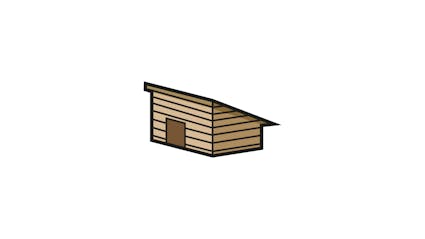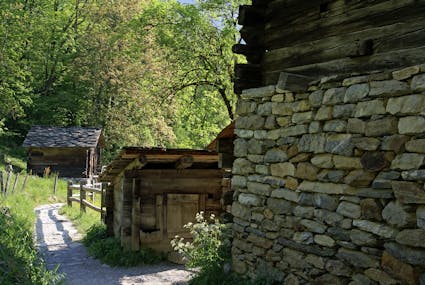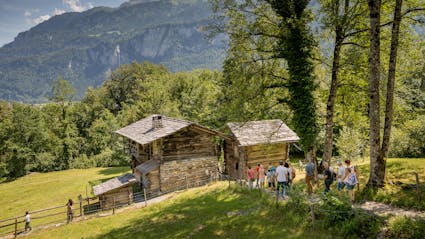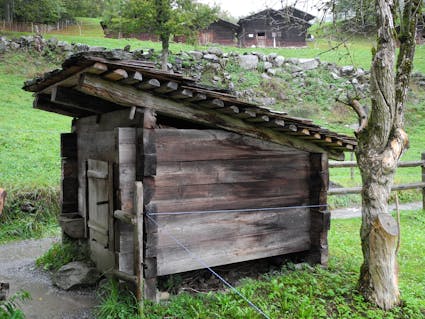1113 – Pig Sty from Blatten, Valais, 19th Century
The pig sty, the "Schwiistiija", stood directly in front of the house from Blatten (1111).

Minihouse
The pig sty, the "Schwiistiija", stood directly in front of the house from Blatten (1111). A "Schtiija" is a small wooden building: it usually measures about two metres by two (seven feet by seven). Next to the front entry there is a hollowed-out tree trunk serving as a feed trough. A minimal opening is sawn out of the timber wall: the hogs had no more light than exercise … They had it no better in summer on the alp: the same kind of small, dark holes housed them there.

Minifarms
Nearly every house in the valley floor village and nearly every alpine hut on the mountainside had its own pig sty, including the dwelling from Blatten (1111). There were hundreds of such buildings in every valley. Smallholder farming has been constantly on the wane since the 1970’s: the older generation of mountain farmers died out, new animal rights laws dictate better stalls. Pig sties, the architectural symbols of general self-sufficiency, have become scarce in the Lötschen valley.

Omnivores
Lettuce trimmings, potato peelings or whatever household waste accumulated was not thrown away but fed to the hogs. In the Lötschen valley their main nourishment was "Sirmda", the liquid whey remnant from cheesemaking. In the fi elds, farmers gathered "Holiga" (dock weeds), "Dischi" (thistles) or "Brennesseln" (nettles) for fodder – the hogs were fattened up for slaughter at a "Metzgete" in early November as hearty winter food reserves.

Ballenberg
Swiss Open-Air Museum
Museumsstrasse 100
CH-3858 Hofstetten bei Brienz
Company holidays
24 December 2025 to 11 January 2026
Opening hours Administration
3 November 2025 to 8 April 2026
From Monday to Friday
8.30 am to 11.30 am
1.30 pm to 4.30 pm
Opening hours
9 April to 1 November 2026
10 am to 5 pm daily